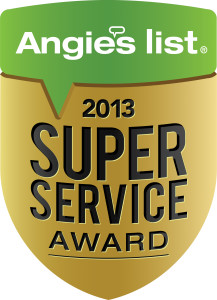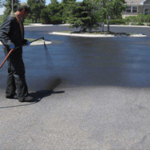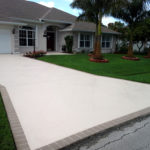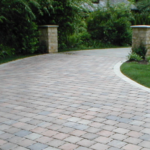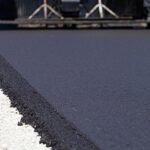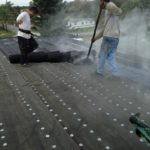Do it Yourself Tar & Chip
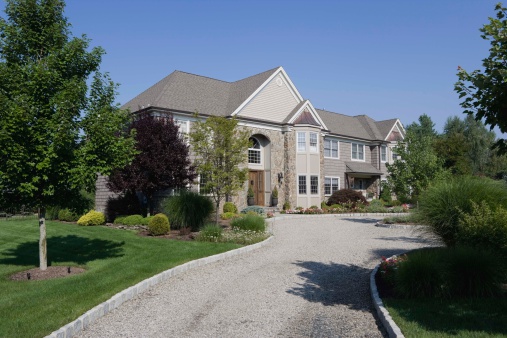
Exterior of house with driveway in suburbia
The expression “tar-and-chip” is a shorthand term that refers to a paving surface made from asphalt (liquid form) and stone. Though the name “tar-and-chip” might not be familiar to you, you almost certainly have seen driveways and roads built this way. The more common choices are materials such as concrete, gravel, pavers or asphalt are being used in ‘tar and chip’.
A tar-and-chip driveway is a low-cost alternative to asphalt, offering a more solid surface than plain gravel. It also has a rough texture, which makes for much better footing when wet or snow-covered, compared to poured concrete, which can be slippery.The basic make-up of a tar and chip driveway includes a thick, compacted base of stone aggregate topped with a couple of layers of liquid asphalt and small gravel.
Building a tar-and-chip driveway is a pretty simple process. First, as with most driveway materials, a gravel base is installed. Then, hot liquid asphalt is poured over the gravel. This is followed by a coating of loose stones, which are rolled into the asphalt to form the finish surface. Tar-and-chip can be installed over existing driveway materials, provided they are in reasonably good shape.
It’s in the selection of this top layer of stones that you have choices to make regarding the look of your finished driveway. You can choose from different colors of stones to create a unique and personally appealing surface.
One problem with building a tar-and-chip driveway, however, is that there aren’t a lot of contractors who specialize in this type of work. And it’s certainly not a DIY project. Before getting too committed to using tar-and-chip on your own driveway, do some Internet hunting to see if you can find someone in your area with the necessary experience and equipment.
Since it is primarily composed of asphalt and gravel, it is useful to compare the cost of a tar-and-chip surface to those other two options. A tar-and-chip driveway will typically cost about twice as much as a gravel driveway and a little less than an asphalt driveway. Expect to pay in the range of $2 to $5 per square foot (the exact cost will vary depending on your region and the labor costs in your community). As is the case with asphalt driveways, the costs of oil are a big factor in the installation expense. Expect the cost of these driveways to climb a bit when the commodity price of oil climbs.
There really is no regular maintenance required of a tar-and-chip driveway. Unlike asphalt, it doesn’t have to be sealed regularly. That’s the good news. On the other hand, snow removal can create problems. If you use a snowplow to clear the driveway, it can damage the surface.
For best results, make sure that the plow rides just above the driveway surface, then remove this leftover snow with a shovel or just wait for it to melt away. You’ll not be faced with this problem if you clear snow with a shovel or snowblower.
Do it Yourself Tar & Chip
Tar and chip driveways are not built for the long haul.Expect the surface to remain sound from 7 to 10 years. At that point, you may want to add another layer of tar and stones.
To find out whether the tar and chip driveways that are built correctly, they have some admirable qualities as follows. Firstly, from a design standpoint, they do have a certain charm. You can choose just about any color chip (gravel), and have the drive blend more with the landscape rather than compete. Secondly, the sound of a car’s tires on the gravel is an attraction too. The homeowners that request a tar and chip driveway always mention this. Birds and waterfalls aren’t the only sounds in the landscape!
Thirdly, it must be long-lasting. Asphalt drives eventually become brittle and cracked. Repairs are obvious and replacement is expensive. Tar and chip drives are easily outlasted them. Lastly, the gravel texture is great for traction. I should mention, however, that if you have snow to remove you need to raise the snowplow blade a bit.
Contact us
 Phone Call |
 Text Message |
 |

